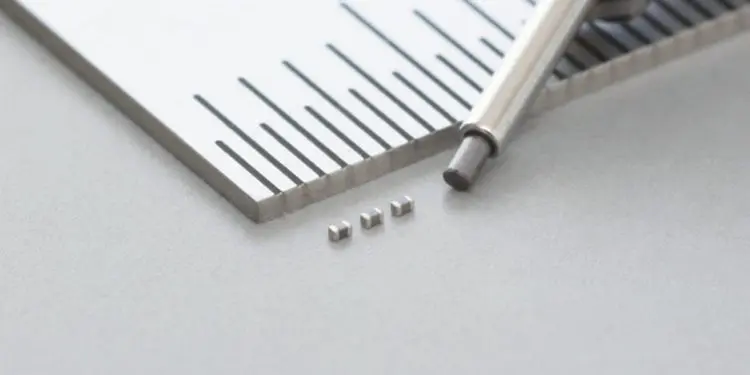Murata Manufacturing Co., Ltd. has developed the world’s first*1 multilayer ceramic capacitor with a capacitance value of 1.0µF in the 01005 inch size (0.4×0.2mm), which is increasingly used in a wide range of mobile electronic devices including smartphones.
Mass production of the GRM022R60G105M with a rated voltage of 4Vdc has already started and mass production of GRM022R60J105M with a rated voltage of 6.3Vdc is scheduled to begin in 2021.
The spread of 5G smartphones and the increasing functionality and miniaturization of wearable devices is stoking the demand for further miniaturization and higher density of electronic circuitry. Among the applications, multilayer ceramic capacitors are essential components of many kinds of electronic devices and are widely used in such devices as smartphones and wearable devices. Given that approximately 900 to 1,100 multilayer ceramic capacitors are installed in a single high-end smartphone, a considerable need exists for capacitors combining smaller size with larger capacity. In particular, since multilayer ceramic capacitors with a capacitance of 1.0µF are widely used in various devices, expanding the adoption of these new products will contribute to the further miniaturization of electronic devices.
Thanks to Murata’s proprietary thin layer technology for ceramic elements and thin-sheet formation technology, these products have achieved approximately a 35% reduction in footprint and a 50% reduction in volume ratio compared to our existing product with the same capacitance value (015008 inch size) *2. In addition, their capacity has increased by about 2.1 times*3 compared to our conventional product of the same size (01005 inch size).
Murata will continue to enhance its lineup of high-temperature guaranteed products and boost their capacitance to meet market needs, thereby contributing to the continuing miniaturization and diversification of mobile electronics.
Summary of Specifications
| Product name | GRM022R60G105M | GRM022R60J105M |
|---|---|---|
| Size (L×W×T) | 0.4mm×0.2mm×0.2mm | 0.4mm×0.2mm×0.2mm |
| Capacitance | 1.0µF | 1.0µF |
| Capacitance deviation | ±20% | ±20% |
| Operating temperature range | -55 to 85°C | -55 to 85°C |
| Temperature characteristics | X5R characteristics (EIA) | X5R characteristics (EIA) |
| Rated voltage | 4Vdc | 6.3Vdc |
| *1 Murata’s survey as of June 29, 2020 |
| *2 Comparison with the existing 015008 inch size product with a capacitance value of 1.0µF (Press release dated May 11, 2016: Murata to introduce the world’s first 05025M size multilayer ceramic capacitor with a capacitance value of 1µF) |
| *3 Comparison with the existing 01005 inch size product with a capacitance value of 0.47µF |






























